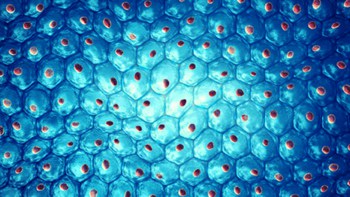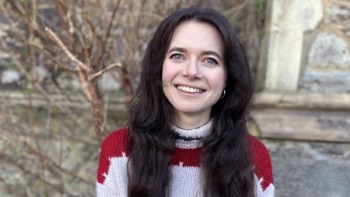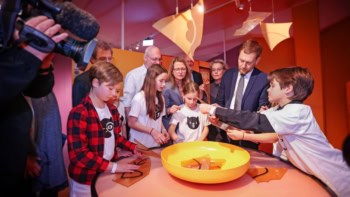Silvia Vignolini, a physicist who studies natural photonic structures, talks to Julianna Photopoulos about working across traditional scientific boundaries, co-founding start-up companies, and setting up a new department from scratch
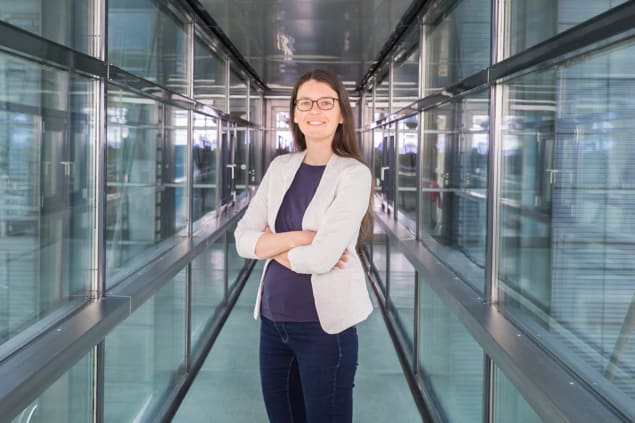
“I always preferred science or maths over other subjects in school,” says Silvia Vignolini, “but I had no idea what a physicist actually did.” Growing up in a small town outside Florence, Italy, Vignolini’s father in fact wanted her to study a subject that would lead to “a proper job” and her route into physics occurred rather by chance. “I had a great chemistry teacher, who would make us read science books and present them to the class.”
As a result, her interest in the subject – and astrophysics in particular – was piqued after Vignolini gave a talk on Stephen Hawking’s A Brief History of Time. Despite not understanding much of the science discussed in the book, she refused to give up and turned to a friend who was studying physics to help her understand the unfamiliar concepts. She then started devouring other science books, including Bertolt Brecht’s biography of Galileo.
But as it turns out, Vignolini’s foray into physics rested on another chance comment too. “I was wearing a large jumper from my mum and black trousers – I had this grunge-style look – and someone said I’d make a really good physicist,” she recalls with a laugh. “I don’t think I’m a particular genius, but I never questioned my decision or asked myself if I would be good enough. I thought studying physics was cool, so that’s what I did.”
I wanted to do astrophysics but it wasn’t as hands-on as I thought, so I ended up going for light and optics.
She went on to study physics at the University of Florence, gaining a bachelor’s and Master’s degree in the subject. “I wanted to do astrophysics but it wasn’t as hands-on as I thought, so I ended up going for light and optics,” Vignolini explains. But as the first person in her family to go to university, her parents did not agree with her choice. In fact, her father had hoped she’d do economics and take over the finances of the family shop. “He thought physics would be a waste of time as I’d never find a job and, back then, I couldn’t really explain what physicists did.”
In 2009 Vignolini was offered a PhD in optical physics at the European Laboratory for Non-linear Spectroscopy (LENS) at the University of Florence. “They told me it would be like my Master’s thesis but would be three years and paid” she recalls. “So I said, ‘why not?’” Lured by the opportunity to do more research and go to conferences, Vignolini admits she was rather naïve about what a PhD would entail. “I wasn’t like the PhD students that I encounter now where they see this as a career.”
New encounters
After her PhD, Vignolini was encouraged to go abroad and ended up doing a post-doc in the Cavendish Laboratory at the University of Cambridge in the UK. Working with the soft-matter physicist Ullrich Steiner, she started studying the optical properties of plants and animals whose vivid colours come not from pigments or dyes but from nanoscale structures that scatter light. But switching fields wasn’t easy. “I thought I’m going because the lab looks really cool but wasn’t sure if the project was going to work, so I insisted with my supervisor to have a second, more physics-based project that involved developing new optical materials.”
As it turned out, moving to the UK proved a great success, helped by the different approach to science compared to back home. “I felt valued and enormously motivated as people were grateful for what [I did]”, she says. “In Italy you usually have to be grateful to people to be able to work.” She also credits Cambridge for opening up her mind and changing how she does science. “Now, I only look at the question, and the tools and people I need to solve the problem.”
In 2014, after receiving a Philip and Patricia Brown Next Generation Fellowship from the University of Cambridge, Vignolini formed her own research group within Cambridge’s chemistry department. Her team set out to build artificial photonic structures using natural materials, with the hope of creating novel biodegradable materials that could replace traditional, potentially hazardous colourants used in, say, cosmetics, textiles and security tags. “So far, we have worked intensively to make more sustainable pigments.”
As a new group leader, she was helped by winning a David Philip fellowship from the Biotechnology and Biological Sciences Research Council (BBSRC) in 2013 to study how plants produce structural colours. She also won a “starting grant” from the European Research Council in 2015. However, Vignolini acknowledges that finding group members was challenging because the research is slow and requires scientists who combine a knowledge of physics, chemistry and biology.

Finding ways to replicate natural structural-colour has massive commercial potential and environmental benefits. “We often don’t really think about how colours are produced, but they come from synthetic pigments and dyes and have a huge environmental cost,” says Vignolini. “They have high use of water and energy, can exploit critical metals or include carcinogenic chemicals, and lots of waste material ends up in waste water and our ocean.”
Keen to commercialize research carried out in her lab, in 2022 Vignolini helped co-found two spin-out companies. Sparxell is headed by Benjamin Droguet – one of Vignolini’s former PhD students – and is trying to replicate the structural colours of cellulose on a large scale to make plant-based coloured pigments and glitters (Nature Materials 21 352). The other company – Impossible Materials – is being led by a former post-doc in her group, Lukas Schertel, and is commercializing the white pigments inspired by the South-East Asian Cyphochilus beetle (ACS Nano 16 (5) 7373).
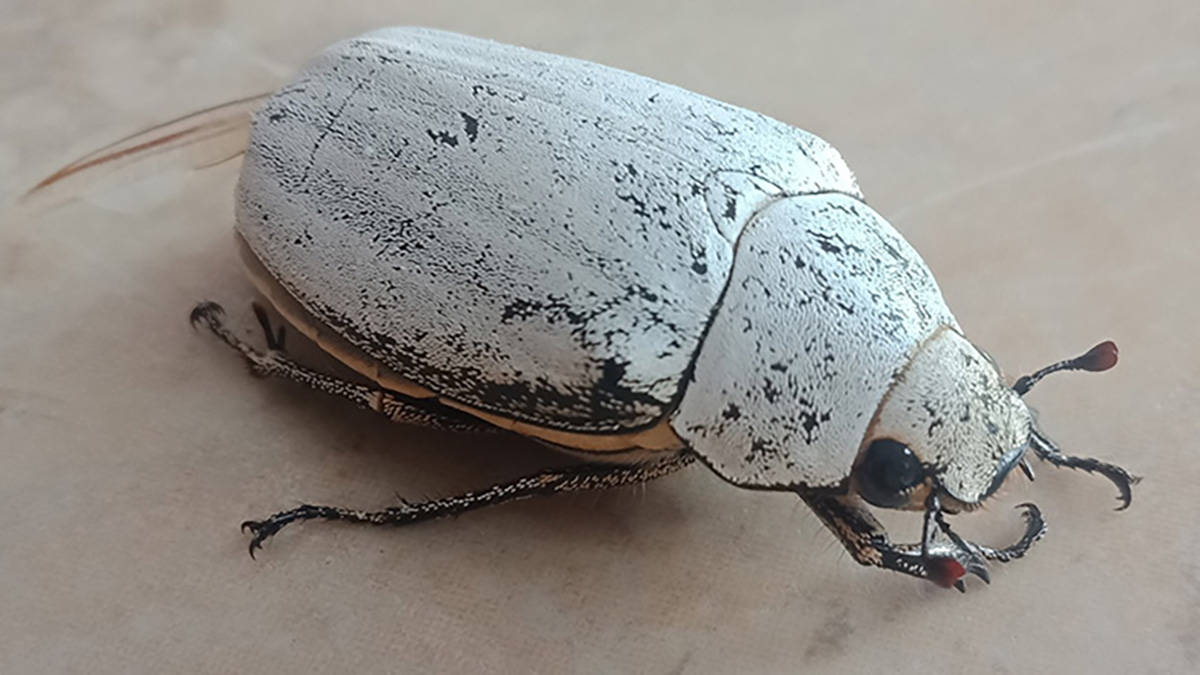
Vignolini is happy that her research is making its way into the real world but she is also proud of her group’s students and postdocs making an impact. “I hope that our technology can be positive for the planet and the problem of global warming, and to continue bringing the best out of people,” she says. “Mentoring is the most important part of my job.”
Directing a department
In January 2023, Vignolini was appointed director of a new department at the Max Planck Institute of Colloids and Interfaces (MPICI) in Potsdam, Germany, dedicated to sustainable and bio-inspired materials. The first female director at the MPICI, she is currently travelling back and forth between the UK and Germany while also raising two toddlers. “I didn’t expect the job would be different, but actually it is. In my research group, I enabled other people and here it’s building something for others,” she says.
Science disciplines don’t have to have distinct boundaries, they are all intertwined and you have to keep an open mind
While still in the early stages of her career in Germany, Vignolini is building an electron microscope room from scratch and searching for a new team. “It takes time to find the right people. Some members of the Cambridge group will move here from September and others are looking for other positions,” Vignolini explains. “The plan is to move 100% here, but I am finishing up some projects in Cambridge and still mentoring students.”

How Treesearch is studying the secrets of forest materials with synchrotron science
In Germany, Vignolini will also be developing another field of research called “sym-bionic matter”, which involves looking at how organisms co-operate to harvest and manipulate light. There’s one species of green sea slug, for example, that sequesters living chloroplasts from the alga it eats so that photosynthesis can carry on inside the slug’s cells. “Science disciplines don’t have to have distinct boundaries, in fact, they are all intertwined and you have to keep an open mind,” she says. “I don’t really see what chemistry or physics or biology is anymore; I take a wider approach and believe that is how science knowledge progresses.”
